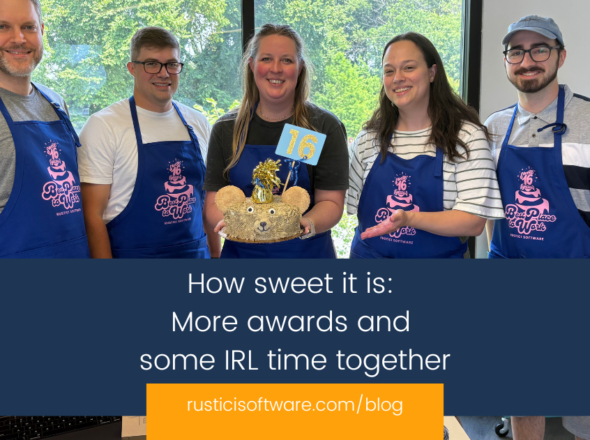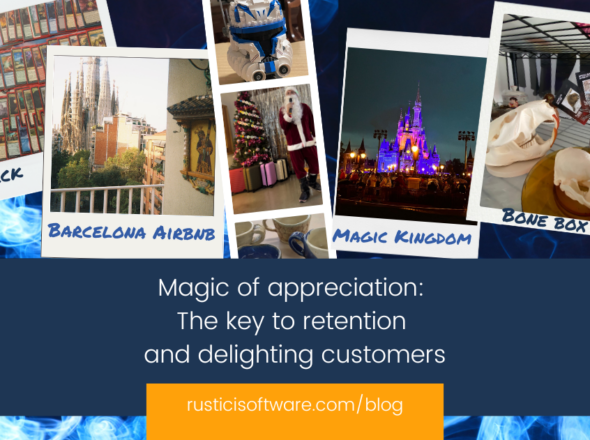When I began working at Rustici Software this past spring, one of my main goals was to help grow and contribute to our already amazing workplace culture. And that’s what inspired me to develop an initiative that’s now known as #WellnessWednesday. In a nutshell, this is an opportunity to not only enhance our well-being, but also bring people together and reinforce our sense of community.
As office managers, Liz and I collaborate often to make sure we find something everyone connects to at least once. Each week brings new offerings that span a variety of topics and activities. This includes:
- sharing health tips via Slack (e.g. the importance and benefits of drinking water throughout the day and exercising mindfulness)
- offering healthy seasonal treats to enjoy at the office or even take home to share with family and friends (e.g. local produce from area vendors and farmers markets)
- hosting an “office yoga” class to demonstrate basic stretches and relaxation techniques
- providing free flu shots and vitamin shots during certain times of the year
This is one way to show we care about our employees needs as much as our customers’ needs. It serves as a reminder that you should take care of yourself as much as you take care of your work. The Wellness Wednesday perks—such as fresh peaches, homemade hummus, or office yoga—gives everyone something to look forward to for a midweek pick me up.
Creating a happy, healthy work environment doesn’t happen overnight. It takes time, consideration, and input from others. Here are four important things I’ve learned along the way:
- Know your audience. You can’t organize successful events if you don’t know what people want or like (or dislike). So ask questions and listen to employees. This is also a great chance to learn if anyone has skills or experience that could inspire or complement future events.
- Have a plan. It’s critical to map out details, logistics, and budgets. A good plan also often answers the 5 Ws: who, what, when, where, why/how.
- Diversify your events. Plan different types of events that appeal to different personalities and preferences. (Tip: Remember, the key is listening to and understanding what people want.)
- Keep things simple. Events should last 15 to 20 minutes and be planned during times that are conducive to work schedules. And remind people that events are optional, so don’t make anyone feel pressure to participate.
In just the few months since launching this initiative, we’ve already seen the benefits extend beyond the office. Employees are self organizing their own activities, like playing soccer on Tuesdays or throwing frisbees in the back parking lots, which is great to see. If you have any ideas on how to encourage wellness at the office, I would love to hear them so reach out or add your blog comment below.


